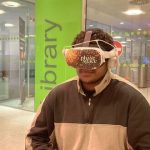Autism is a more prevalent condition than many realize, with about 1 in 36 children being diagnosed with autism spectrum disorder according to the CDC. This number has been steadily increasing since 2000, when data collection began. Studies have also revealed that more adults are receiving autism diagnoses, leading to a growth in awareness and understanding of the disorder.
On social media platforms like TikTok, videos sharing signs of autism in adults and lesser-known symptoms are gaining millions of views. Additionally, more celebrities are coming forward with their own autism diagnoses or sharing that their children are on the autistic spectrum. This openness is helping to break down the stigma that still surrounds autism.
Autism spectrum disorder (ASD) is defined as a developmental disability caused by differences in the brain, leading to a wide range of signs and symptoms such as communication challenges, repetitive behaviors, and delays in language, movement, or learning skills. While many individuals with ASD are diagnosed in childhood, adults can also receive diagnoses. The spectrum nature of autism means that symptoms can vary greatly among individuals with ASD.
With increased diagnosis rates, it is more important than ever to raise awareness and promote acceptance of autism. Celebrities like Sia, Greta Thunberg, Holly Madison, Susan Boyle, Dan Aykroyd, and Anthony Hopkins have all shared their experiences with autism, helping to normalize conversations around the condition.
For example, actress Tallulah Willis recently shared her diagnosis in a heartfelt Instagram post. Pop singer Sia discussed her autism diagnosis in a podcast interview, reflecting on her journey towards self-acceptance. Environmental activist Greta Thunberg embraced her autism as a superpower, using it to fuel her advocacy work. Each celebrity has a unique story that sheds light on the diverse experiences of individuals with autism.
These stories remind us that autism is a part of who someone is, not a defining characteristic. Through open dialogue and increased understanding, we can create a more inclusive and supportive environment for individuals with autism.





